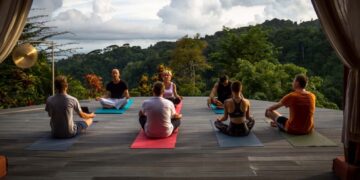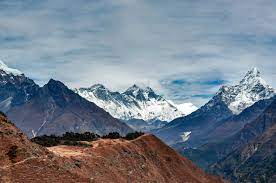Everest Base Camp trekking is a once-in-a-lifetime adventure that draws thousands of trekkers from around the world. Situated in the Khumbu region of Nepal, this trek offers the opportunity to experience the majesty of the Himalayas, stand at the foot of the world’s tallest mountain, and immerse yourself in the rich Sherpa culture. Whether you’re a seasoned hiker or a first-time adventurer, this trek provides a truly unforgettable experience.
The Route and Journey
The trek begins with a thrilling flight from Kathmandu, Nepal’s capital, to Lukla, a small town known for its short and challenging airport runway. This flight is often considered one of the most dangerous but exciting air routes in the world. Upon arrival in Lukla, you’ll begin the trek to Everest Base Camp.
The journey typically spans 12-14 days and takes trekkers through a variety of landscapes—from lush green forests to barren high-altitude terrain. Along the way, you’ll pass through several Sherpa villages, such as Phakding, Namche Bazaar, Tengboche, Dingboche, and Lobuche, each with its own unique charm and culture.
Namche Bazaar, a bustling town located at 3,440 meters (11,286 feet), is the first major stop on the trek. It is the main trading hub of the region and also serves as an important acclimatization point. Namche offers spectacular views of Everest, Lhotse, and other surrounding peaks.
As you continue upwards, the air gets thinner, and trekkers must take regular breaks to adjust to the altitude. Most itineraries incorporate acclimatization days in Namche Bazaar and Dingboche to ensure proper adjustment and reduce the risk of altitude sickness.
Acclimatization and Altitude Sickness
One of the main challenges of Everest Base Camp trekking is dealing with the altitude. At over 5,364 meters (17,598 feet), Everest Base Camp sits in a high-altitude environment where the oxygen levels are much lower than at sea level. Altitude sickness can affect anyone, regardless of age or fitness level.
To help prevent altitude sickness, trekkers are advised to follow the “climb high, sleep low” rule. This means that you should ascend to higher altitudes during the day and return to a lower elevation to sleep. This gradual ascent helps the body adjust to the decreasing oxygen levels.
Symptoms of altitude sickness include headaches, dizziness, nausea, and shortness of breath. If you experience any of these symptoms, it’s important to stop ascending and give your body time to acclimatize. In some cases, descending to a lower elevation may be necessary.
The Cultural Experience
One of the most rewarding aspects of Everest Base Camp trekking is the cultural experience. The region is predominantly inhabited by the Sherpa people, known for their remarkable strength, resilience, and deep-rooted Buddhist traditions. Along the way, trekkers can visit monasteries, witness local rituals, and interact with the Sherpa people, who are famous for their hospitality.
A key cultural highlight of the trek is a visit to Tengboche Monastery, located at 3,860 meters. This monastery is the largest in the Khumbu region and offers incredible views of Mount Ama Dablam. The monastery is an important spiritual site, and many trekkers take a moment to observe Buddhist ceremonies and prayer rituals.
Best Time to Trek
The best time for Everest Base Camp trekking is during the spring (March to May) and autumn (September to November) seasons. These months offer the most stable weather, with clear skies and moderate temperatures. The spring season brings blooming rhododendron forests and vibrant wildflowers, while autumn offers crisp air and the best mountain views.
The trek can also be completed in the winter, but it is much colder, and some of the higher-altitude teahouses may be closed. The summer monsoon season (June to August) is not ideal, as the trails can become slippery and the mountain views are often obscured by clouds.
What to Pack
Packing the right gear is essential for Everest Base Camp trekking. The weather can vary greatly, so it’s important to be prepared for both warm and cold conditions. Some of the essential items to bring include:
- Trekking boots with good ankle support
- Warm clothing, including a down jacket and thermal layers
- Sleeping bag rated for high-altitude trekking
- Waterproof gear (jackets, pants, gloves)
- Sun protection, such as sunscreen and sunglasses
- A daypack for carrying essentials like water, snacks, and a camera
Conclusion
Lukla Flight is not just a physical challenge—it’s a deeply transformative journey. It offers a unique opportunity to experience some of the world’s most awe-inspiring landscapes, witness Sherpa culture, and achieve a personal goal that many dream of but few accomplish. Whether you’re a seasoned trekker or a first-time adventurer, this journey promises to be a life-changing adventure that will stay with you forever.






























